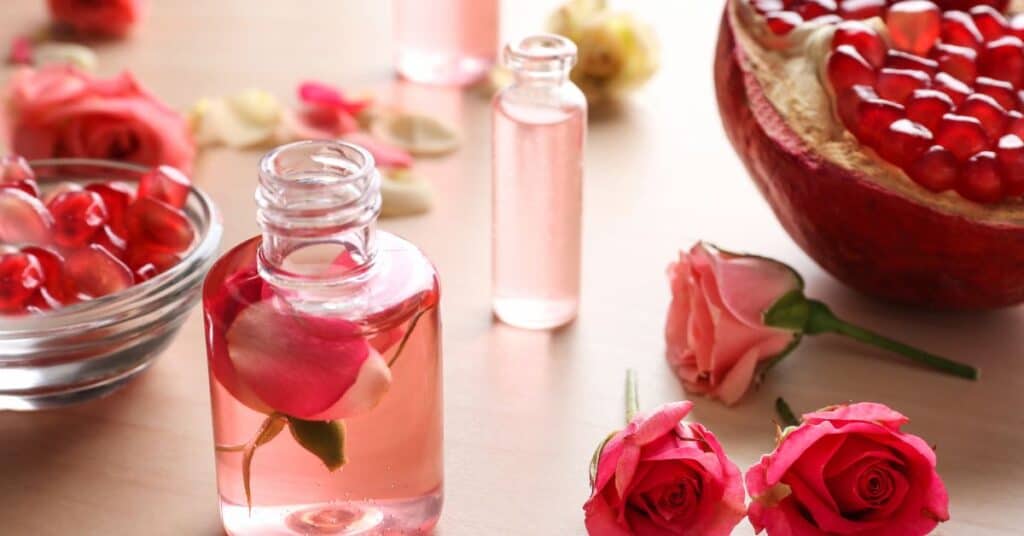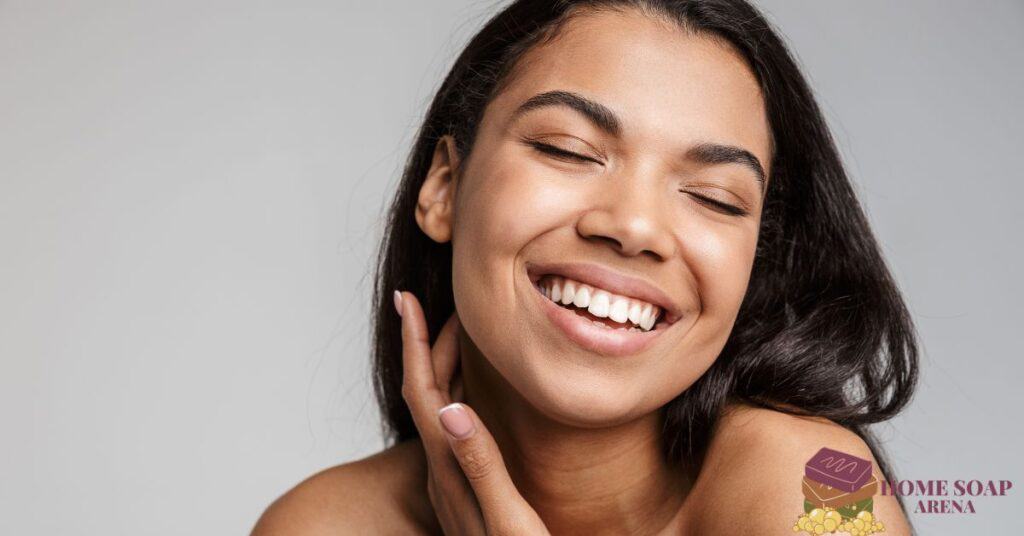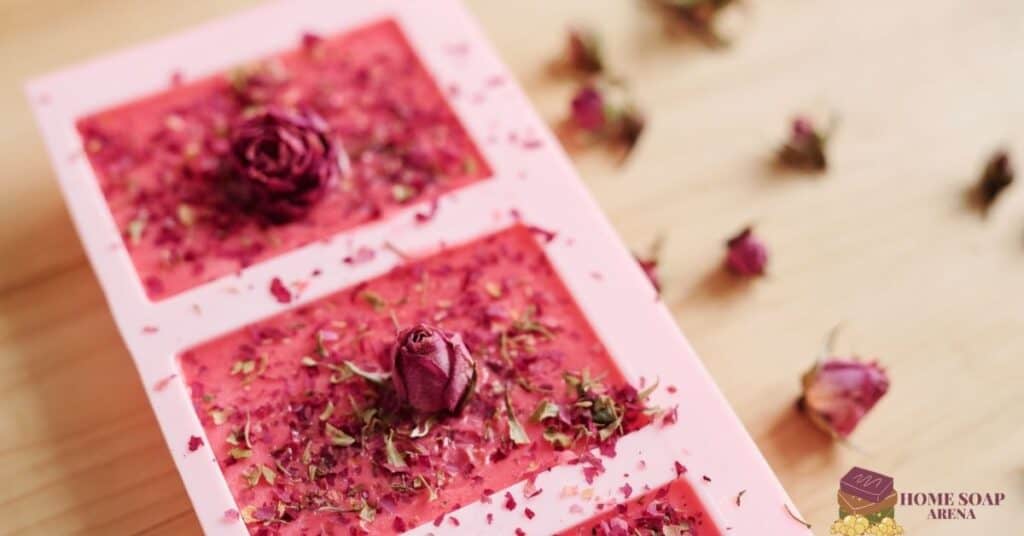Table of Contents
- What Are The Benefits Of Tropical Scent In Soap-Making?
- What are tropical flavors in soap making?
- How do you make fragrance oil last longer in soap?
- What Are Some Tropical Fragrance Oil Blends?
- How To Blend Tropical Fragrance Oil
- Conclusion
What tropical fragrance? A tropical fragrance oil evokes the aromas of tropical fruits, flowers, and other elements associated with warm and exotic destinations.
The first thing I do when I pick up a soap is smell it.
The aroma is the “presentation card” of the soap, and almost 100% of the time, the smell is one of the reasons I buy it.
When I make our soaps at home, besides the wonderful properties, I have total freedom to add the scent of my choice.
In this blog, we will explore tropical fragrance oils for soap in detail.
What Are The Benefits Of Tropical Scent In Soap-Making?
Tropical scents are beneficial because they are appealing to both men and women, and they can be used in a variety of products, including soaps, candles, air fresheners, shampoos, scrubs, colognes, and lotions.
Tropical fragrance oil is a type of fragrance oil that has a fruity, floral, or exotic scent.
They will remind you of a tropical beach setting or a getaway island perfect for the holidays.
I often hear people express concerns about the safety of fragrance oils because they are not natural.
However, it’s important to understand that being natural doesn’t guarantee safety, nor does being synthetic mean something is automatically unsafe.
Essential oils are often marketed as a chemical-free alternative to fragrance oils, but this is not entirely true.
In reality, essential oils comprise numerous chemical compounds naturally found in plants.
Interestingly, many fragrance oils also contain these same chemical compounds, so there is a significant overlap between the two types of oils.
Some examples of tropical fragrance oils are coconut, mango, pineapple, plumeria, hibiscus, and orchid.
– Adding a pleasant and refreshing aroma to your soap that can evoke a sense of relaxation, happiness, or vacation.
– Increasing the moisturizing and nourishing properties of your soap, particularly if the fragrance oil contains natural ingredients or extracts from tropical fruits or flowers.
– Creating a colorful and attractive soap design, as tropical fragrance oils often come in vibrant hues or can be mixed with other colorants to create a tropical theme.
Fragrance oils are a more cost-effective option than essential oils when making soap.
This is because they don’t require a large amount of plant matter to make.
Furthermore, fragrance oils have a longer-lasting and more potent scent than essential oils.
Choosing fragrance oils, essential oils, or a combination of the two in your soap will depend largely on a person’s preference.
What are tropical flavors in soap making?
Tropical flavors in soap making are inspired by the fruits, flowers, spices, or other ingredients that grow in tropical regions.
They are suitable for soap, shampoo, shower gel, bath bombs, bath oil, bath salts, gels & cream bases.
Tropical regions are areas near the equator that have a hot and humid climate and abundant rainfall.
Some examples of tropical flavors in soap making are:
Ylang ylang
Vanilla
Sandalwood
Cedarwood
Mandarin orange
Cinnamon
Lemongrass
Rosehip
Peppermint
Coconut
Mango fragrance: Suggest blending with Island Kiss, Peach, Freesia, or Vanilla.
Pineapple
Papaya
Lime
Hibiscus
Lavender flower
Sea Kelp Fragrance: An upscale spa-type scent that is fresh, clean, and full of salty ozone
Sea Grass & Sand Dunes Fragrance Oil. And a lot more; the key is knowing how to mix your fragrance oils to give you your desired tropical scent.
How do you make fragrance oil last longer in soap?
There are several answers to this, depending on the ingredient you added to give the aroma.
We need to make mixtures with fragrance oils to keep the aroma we add from dissipating overnight. Fragrance oils are classified in notes.
⇒High Note
⇒Average rating
⇒Low Rating
High notes: these are the ones that evaporate faster and, therefore, last much less in your soap
Medium notes: has an intermediate evaporation time. It is considered the fragrance’s heart and corresponds to a larger part of the fragrance oils.
Low rating: those that take longer to evaporate, preserving the smell for much longer in soap.
To ensure that the fragrance of your soap lasts much longer, you must mix these notes proportionally.
Mix those that evaporate very quickly with those that evaporate more slowly, and this way, the latter will fix the former.
Use the amount of fragrance oil recommended for your soap base.
Choose fragrance oils compatible with soap making and have good scent retention.
Some fragrance oils may fade or change in soap due to the high pH and temperature of the saponification process.
Check the reviews and ratings of fragrance oils from reputable suppliers before buying them.
To make your fragrance oils last longer, anchor them with clay, base notes, or fixatives.
Clay is a natural absorbent that helps to slow down the evaporation of fragrance oil.
Base notes are also known for their long-lasting properties, which can help to keep the soap smelling fresh for longer.
Fixatives are substances that slow down the evaporation of fragrance oils, making them last longer.
Some examples of fixatives include benzoin resin, orris root, and glycerin.
Clays include kaolin and bentonite, while base notes include sandalwood, patchouli, and vanilla.
What Are Some Tropical Fragrance Oil Blends?
- Coconut Paradise Fragrance Oil: A creamy and exotic blend of coconut milk, vanilla, pineapple, and rum
- Watermelon Fragrance Oil: A juicy and refreshing scent of ripe watermelon with a hint of sugar.
- Citrus Mist Fragrance Oil: A zesty and uplifting mix of grapefruit, lemon, lime, orange, and bergamot.
- Eucalyptus Spearmint Fragrance Oil: A soothing and refreshing combination of eucalyptus, spearmint, lavender, and sage
- Mango Fragrance Oil: A sweet and tropical aroma of fresh mango with notes of peach, apricot, and papaya.
- Ocean Breeze Fragrance Oil: A clean and fresh scent of sea salt, ozone, citrus, jasmine, and musk.
- Beach Fragrance Oil: A relaxing and sunny blend of coastal linen, pink sands, ocean mist, sea salt, and driftwood.
- Tropical Plumeria Fragrance Oil: A floral and delightful fragrance of Hawaiian plumeria flowers with a touch of fruit.
- Pineapple Fragrance Oil: A tangy and delicious scent of ripe pineapple with a hint of coconut.
- Coconut Cream Fragrance Oil: A rich and decadent scent of coconut cream pie with notes of whipped cream, vanilla, and toasted coconut
See here some examples of combinations that I particularly like! They are for 1 kilo of soap (+- 700gr of oils)
Fragrance example 1
-cinnamon 8g
– lemon 15g
– Orange 15g
Fragrance Example 2
– cloves 9g
– citronella 9g
– eucalyptus 9g
– mint 3g
Fragrance example 3
– Benzoin 10g
– Eucalyptus 10g
– Tomillo10gr
How To Blend Tropical Fragrance Oil
To mix tropical fragrance oil to get an amazing aroma in soaps, you must consider the type, notes, and strength of the scents you want to combine.
You also need to measure the right amount of fragrance oil for your soap base and cure your soap properly to preserve the fragrance.
Here are some steps and tips to help you create your tropical soap blends:
Step 1: Choose your tropical fragrance oils. You can use single-note fragrance oils that smell like tropical fruits, flowers, or spices.
Or you can use pre-blended fragrance oils that already have a tropical theme.
Some examples of tropical fragrance oils are Coconut Paradise Fragrance Oil, Watermelon Fragrance Oil, Citrus Mist Fragrance Oil, Ocean Breeze Fragrance Oil, and Tropical Plumeria Fragrance Oil.
You can also mix and match different fragrance oils to create unique combinations.
Step 2: Test your fragrance oil blends on blotter strips.
Before adding fragrance oils to your soap, you should test how they smell together on blotter strips.
This is a quick and easy way to experiment with different ratios and combinations of scents.
Use droppers to add one drop of each fragrance oil to a blotter strip and smell the result.
Adjust the amounts or add more scents until you are happy with the blend.
Label the blotter strips with the names and amounts of the fragrance oils for future reference.
Step 3: Measure the fragrance oil for your soap base. A digital scale can be used to weigh fragrance oil precisely.
Step 4: Add the fragrance oil to your soap at Trace.
Trace is the stage in soap making when the mixture has thickened so it can no longer be poured easily, and there are no visible oil streaks.
This is the moment at which you should add the fragrance or essential oil.
Fragrance oil and mix it well into the soap. Be careful not to overmix or undermix the soap, as this can affect the scent and texture of the final product.
Step 5: Pour the soap into molds and let it harden. You can also decorate your soap with colorants, botanicals, or embeds.
Allowing soap to cure well helps preserve the fragrance.
Conclusion
Now equipped with the understanding of tropical fragrance oils, it’s essential to mix them appropriately to get the desired result.
Tropical fragrance oils for soap are a great way to add a touch of exoticism and freshness to your homemade soap.
Whether you prefer the sweet and fruity aromas of mango, pineapple, or coconut or the floral and spicy jasmine scent, ylang-ylang, or ginger, there is a tropical fragrance oil for you.
You can try different combinations and proportions of tropical fragrance oils to make one-of-a-kind soap blends.



